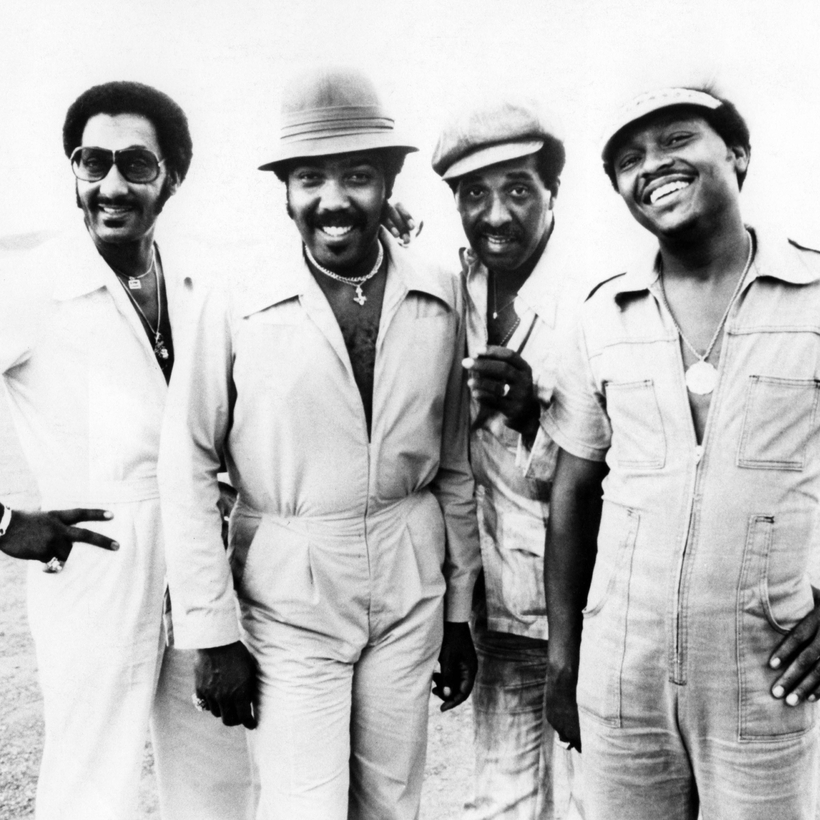When I was 14, whether from an abundance of caution or immodesty, I put my Desert Island Disc selections on paper. The list has been lost, thankfully, and in any case I cheated, because I picked albums rather than single recordings. But I do remember my No. 1 choice, as it remains my first and probably always will: Four Tops Second Album.
The Tops—Levi Stubbs, Abdul “Duke” Fakir, Renaldo “Obie” Benson, and Lawrence Payton—were the coolest, dressed the sharpest, and sang like angels. I doubt I’m alone in supposing that Stubbs’s voice must be what God sounds like.
This is all to say, I was bound to love Duke Fakir’s memoir, I’ll Be There, just as I have loved the man despite never having met him. But having now read it, you don’t need to like or even know anything about the Four Tops or their music to appreciate it for the honest, uplifting, and beautiful book it is. If you do, however, it’s heaven.
We get Fakir’s childhood in Detroit (his Muslim father, Nazim, was born in modern Bangladesh and arrived in America by way of cooking in London, booking passage to Canada, and swimming across the Detroit River); the acquisition of his nickname (shortened from the less appetizing “Dukie”); his modest beginnings in the church choir (Fakir’s debut solo literally ended in tears); and meeting Stubbs, Jackie Wilson’s prodigiously gifted 11-year-old cousin. They bonded over singing and “surviv[ing] a horrible gang fight” between the Shakers and crosstown rival the Gigolos. (Fakir had belonged to one, then the other.)
Their first gig could hardly have gone worse. Hired by one Welton E. Barnett to back up his ex-convict lover, Fakir and Stubbs quickly realized that “Ex Con” was devoid of charisma and wildly off-key. So, alas, did the manager of the country club they were playing at, who cut them off unceremoniously, if memorably, during their second song: “Get the fuck off my stage and don’t come back!”
They ran into Barnett years later in California, where he made his living by getting hit by cars and suing insurers. “He was so proud of his success, as well as ours,” writes Fakir. “He always remembered that he had given Levi and me our first break. ‘I put y’all in the business,’ he bragged.” Success has many colorful fathers.
A basement graduation party in 1954 marked the first time the four appeared together. Invited to sing by the class’s head girl, Stubbs and Fakir enlisted Benson and Payton to accompany them. The reception was electrifying. Inspired by the four-part harmonies of the Four Freshmen and the Hi-Lo’s, they started practicing, got matching white wool suits at Hot Sam’s clothing store (Hot Sam gave them credit and looked back fondly: “I was the first one who dressed y’all in the business”; his claim was, in fairness, sturdier than Barnett’s), and called themselves the Four Aims.
They followed James Brown at an early booking, watching his set with mounting horror: “How in the fuck we gone follow this?” Stubbs rallied them: “We can’t out funk him, we can’t out dance him, we can’t out holler him, but we can out sing this motherfucker. So we just gonna go up there and sing. That’s the only chance we got.” (They did and exited the stage to an ovation.)

Payton’s cousin, Roquel “Billy” Davis, who would co-write “Reet Petite” and “I’d Like to Teach the World to Sing (in Perfect Harmony)” for McCann Erickson, brought them to Chess Records. It was there that they went from the Aims to the Tops; the eponymous Chess brothers wanted to avoid potential confusion with the Ames Brothers.
If the rest is more familiar—signing with Motown, the collaboration with Holland-Dozier-Holland—the details will be new to many. Berry Gordy got the Tops over the line at the negotiating table by orally “guaranteeing” hits and giving each of the four $100 in cash as an advance.
He delivered on his promise, in part by introducing them to the dazzling songwriting trio of Brian Holland, Lamont Dozier, and Eddie Holland (HDH), whom Fakir describes as “tailors of music”: “They could write and produce a song that was perfect for you, and then two days later do the same thing for another artist in a totally different style.… They’d start by sitting with the artist, talking, listening, getting ideas, like measuring somebody up for [a] suit.” “Baby I Need Your Loving,” “I Can’t Help Myself (Sugar Pie, Honey Bunch),” “It’s the Same Old Song,” and “Reach Out (I’ll Be There)” were among the results.
We learn that the Beatles’ manager Brian Epstein championed the Tops and orchestrated their approach to English audiences; that Fakir was briefly engaged to Mary Wilson of the Supremes; that he was present at the creation of the Marvin Gaye classic “What’s Going On” (co-written by Benson), as well as for Michael Jackson’s “mind-blowing” moonwalk at the Motown 25th-anniversary special in 1983; and that Gordy’s sister, Esther, canceled the balance of one of the Motown revue tours through the South and refused to return until audiences were de-segregated.
Fakir owns his share of mistakes, whether of family, finances (he managed to combine the don’ts of spending money on boats and investing in restaurants with the Lansdowne, his 294-foot casino-dining barge), or substances (“Thank God I never went past cocaine”). He reflects on the cautionary tale of his onetime mentor, jazz legend Billy Eckstine, whose can’t-miss talents were crippled by racism and drug addiction, and the pattern of tragedy in the young and famous: “They never get to experience what they’re really like without the music…. They take drugs to recreate that great feeling in their normal life, but they can’t fill that space. They have to learn to live outside the music.”
One by one, the Tops passed away—Payton in 1997, Benson in 2005, Stubbs in 2008. Lawrence Payton Jr. remembered his mother’s being angry at his father once long ago. She marched over to where the Tops were rehearsing, slowing and pausing as she heard the music through the door. “‘So you going in, Ma?’ ‘Naw,’ she said, not moving. ‘I just want to listen for a while.’ For a long time she just sat there. Then she walked away…. That’s when we were young, singing those beautiful harmonies, with those young voices.”
The passages on Stubbs are rich and satisfying, from his methods (he copied lyrics by hand in order to “feel” the music) and loyalty, to what made his sound special: “His voice was strong and forceful, but it also had a cry to it, a masculine, robust, crying feeling…. It was as close to the sound of love as a singer can convey and closer to salvation.”
Replacing the departed Tops wasn’t easy. The night Stubbs couldn’t go on, Fakir pressed ex-Temptation Theo Peoples and Ronnie McNeir into service. Peoples: “Duke, let me say, I know the songs, but I cannot remember all them mother fucking words to all them songs.” McNeir demanded shoes to go with those of the other Tops. “People ain’t going to pay no attention to that shit,” Fakir replied. “Just get up there and sing.” “But the minute we went onstage … someone in the audience screamed, ‘Wait a minute, where’s Levi!?’ Then another voice taunted, ‘Hey man, what’s up with them shoes!?’ Ronnie looked at me and his look said everything, ‘I told you.’”
Stubbs’s final performance was at the White House in 1999; he had been diagnosed with cancer in 1995 and had long since retired from touring. The Tops had sung for Bill Clinton on three occasions, once when he was the governor of Arkansas and twice at his birthday celebrations as president. They were, Clinton said, his favorite Motown act, and he wanted them to play once more before he left office in the New Year. An entertainer to the last, Stubbs didn’t need to be asked twice: “Duke, let’s make this motherfucker happy.”

Max Carter is the head of the Impressionist and Modern Art department at Christie’s in New York


